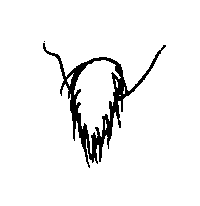Stoneflies - Plecoptera: Chloroperlidae of Gunnison County, ColoradoSuwallia lineosa - Lined SallflyBanks 1918Updated 19 Aug 2018
NotesOlder publications may refer to this species as Alloperla lineosa.Good LinksOn this website:Introduction to the Suwallia Other Websites: ReferencesAlexander,KD and Stewart,KW 1999 Revision of Genus Suwallia Ricker (Plecoptera: Chloroperlidae). Transactions of American Entomological Society 125(3) 185-250.Banks,N 1918 New neuropteroid insects. Bulletin of the Museum of Comparative Zoology 62(1):1-22, pl. 1-2. Described as Alloperla lineosa.  Baumann,RW, Gaufin,AR and Surdick,RF 1977 The stoneflies (Plecoptera) of the Rocky Mountains. Memoirs of the American Entomological Society 31, 1-208. PDF Quote from page 172: "This species is found in creeks and small rivers. The adults emerge in May to September. " DeWalt,RE; Stewart,KW; Moulton,SR; Kennedy,JH 1994 Summer emergence of mayflies, stoneflies, and caddisflies from a Colorado mountain stream. Southwestern Naturalist 39 3, 249-256. Abstract: " The summer emergence patterns of mayfly, stonefly, and caddisfly species are described for a second order, southern Rocky Mountain Colorado stream. Frequent, standardized, sweepnetting and emergence trap samples provided 1,779 adults of 45 taxa consisting of 11 mayfly, 15 stonefly, and 19 caddisfly species. The five most dominant species were, in order of importance, Suwallia nr. lineosa, Sweltsa coloradensis, Oligophlebodes minutus, Paraleuctra vershina, and Baetis bicaudatus. Stoneflies contributed 70% of all adults collected. Peak species richness of all orders occurred near the summer solstice and maximum water temperatures. The range of slope values generated by simple linear regression of cumulative percentage catch revealed that emergence was extended (slopes < 4%/day) for five of the seven most abundant species. Two caddisflies, O. minutus and Rhyacophila pellisa, displayed a synchronous emergence pattern. This study adds 35 new records for the Rio Conejos drainage and Conejos County and provides a baseline of comparison against future changes in species richness among these orders." Kondratieff,BC and Baumann,RW 2002 A review of the stoneflies of Colorado with description of a new species of Capnia (Plecoptera: Capniidae). Transactions of American Entomological Society 128 3, 385-401. Quote from page 393: " This summer emerging species usually occurs in higher elevation streams of the Mountain and Plateau regions. Presently the only confirmed records other that the type (Geneva Park, Park Co.) is for four females from Eagle Co. (Alexander and Stewart 1998). This species is probably more common than records indicate." Newell,RL; Baumann,RW and Stanford,JA 2008 Stoneflies of Glacier National Park and Flathead River basin, Montana. International Advances in the ecology, zoogeography, and systematics of mayflies and stoneflies. University of California Publications in Entomology, Berkeley and Los Angeles, pp.173-186. The authors note that S. lineosa was the 6th most frequently recorded species out of the 100 different stonefly taxa they collected in their survey of Glacier National park and the Flathead basin in northwestern Montana.
|

